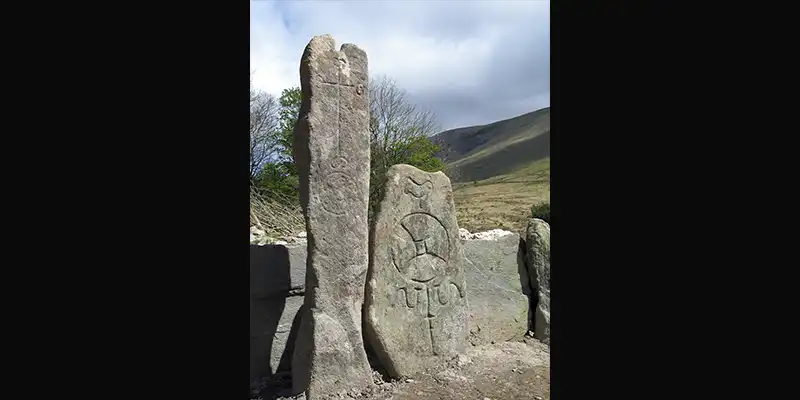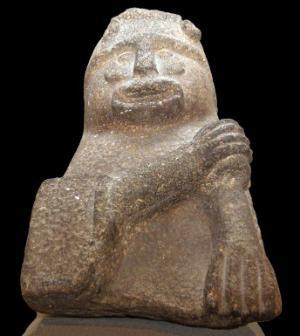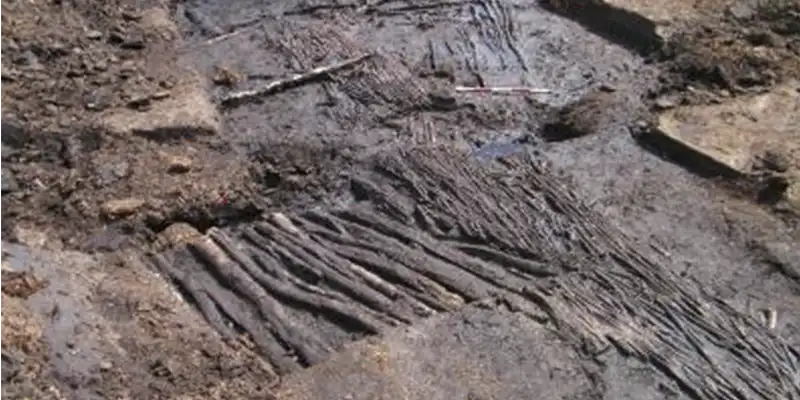In This Section
IRC awards funding to 3 projects in the Dept of Archaeology

IPeAT - Irish Peatland Archaeology Across Time (PI: Dr Ben Gearey), NEW PASTURES (PI Dr Katharina Becker) and DAEICS - Digital Atlas of Early Irish Carved Stones (PI Dr Tomas O’Carragain)
DAEICS - Digital Atlas of Early Irish Carved Stones (PI Dr Tomas O’Carragain)
Along with UCC and QUB colleagues and other collaborators, Tomás Ó Carragáin of the Archaeology Department has been awarded IRC COALESCE funding to produce a Digital Atlas of Early Irish Carved Stones (DAEICS).
The award relates to the INSTAR+ stream of COALESCE, which is funded by the National Monuments Service of the Department of Housing, Local Government and Heritage in partnership with the Heritage Council. The project brings together archaeologists from the private, university, and state sectors, in partnership with community groups, to deliver a step-change in both the academic understanding and public appreciation of carved stone monuments. The project team includes Patrick Gleeson (QUB), Griffin Murray, John Sheehan, Diarmuid Ó Riain, Nick Hogan, Pat Meere (all UCC), Kate Colbert (UG), Gary Dempsey (Digital Heritage Age, ATU) and Aidan Harte (Munster Archaeology).
 The Tandragee Idol Armagh
The Tandragee Idol Armagh
Carved stone monuments are among our most tangible links to the distant past. From the La Tène-decorated examples of the Late Iron Age (AD 1–400), to the cross-slabs and high crosses of the early medieval period (AD 400–1200), people in late prehistoric and early historic Ireland used stone carving to express their values and identities as skilled craftspeople and as members of kin-groups and wider communities. Stones were carved to preserve the memory of revered ancestors and deceased loved ones, to assert ownership of tracts of land, and to serve as focal points for communal rituals and devotions. These monuments have huge potential to enhance our understanding and enjoyment of Ireland’s past and its links to the wider world, for some designs indicate connections across Europe and as far afield as the Middle East. Yet, to date, that potential remains unrealised. Building upon crucial work by the Irish National Monuments Service and the Northern Irish Historic Environment Division, this project will map the surviving examples on the island, allowing scholars and the public alike to explore regional and chronological patterns as never before. In collaboration with local communities, the project team will use the atlas to inform and enable detailed studies of outstanding collections centred on Clonmacnoise, Armagh, and Iveragh. Through training in digital recording techniques, citizen scientists will be empowered to make an enduring contribution to the study of carved stones, thereby promoting the public appreciation and conservation of these important monuments.
‘New Pastures’
An IRC grant (COALESCE/2022/1717- Collaborative Alliances for Societal Challenges) has been awarded to Dr Katharina Becker, Department of Archaeology, under Strand 1 L – Instar National Monuments Service of the Department of Housing, Local Government and Heritage in partnership with the Heritage Council, supports Irish National Strategic Archaeological Research.
The project ‘New Pastures’ project will address central gaps in current understanding of the 1st millennia BC and AD by utilizing the abundant data generated by the infrastructural schemes of the recent past to create new knowledge about animal husbandry practices, settlement modes and lifeways of the Iron Age (IA).
The cutting edge, interdisciplinary research strategy combines zooarchaeological and isotopic analysis, Bayesian modelling and Ancient Genomics to the study of the remains of sheep, goat, cattle and horse found in Ireland. This will create a completely new understanding of animal husbandry practices of the Iron Age in all their facets and address fundamental questions about Iron Age society:
- What forms of animal husbandry were practiced in the Iron Age in Ireland?
- What settlement modes and patterns of mobility are implied by modes of animal husbandry?
- What is the nature of the hiatus observed in the archaeological record at the start and end of the IA? Can these, and thus the transition between the Late Bronze Age and to the Early Medieval period be better understood through analyses of archaeological animal populations?
- Are current policy and practice aligned in a way that ensures the preservation of important animal bone assemblages to meet the overarching policy aim of preservation by record?
The project is interdisciplinary and collaborative and brings together a range of internationally leading experts from Ireland, the UK, the US and France, with local heritage and community stakeholders from County Kildare and Laois, to co-create knowledge and understanding of our joint heritage, that will create a new baseline understanding of Iron Age life in Ireland.
Professor Derek Hamilton, University of Glasgow; Stable isotope analysis, radiocarbon dating and Bayesian modelling
Professor Dan Bradley, Trinity College Dublin; Ancient Genomics
Professor Ludovic Orlando, CNRS, University of Toulouse; Ancient Genomics
Professor Susan Johnston, George Washington University; Archaeology of Dún Ailinne and the Iron Age
Professor Pam Crabtree, NYU; Zooarchaeology and archaeology of Dún Ailinne;
Dr Zenobie Garrett, University of Limerick; Archaeology of Dún Ailinne, GIS analysis and community engagement
Dr Erin Crowley-Champoux, University of Southern Maine; Zooarchaeology of Medieval Ireland
Ms Bridget McLoughlin Heritage Officer Programme, Kildare
Kilcullen Heritage Group Kildare Local History
Commercial partners: Archaeological Consultancy Services Dr Kerri Cleary and Donal Murphy Rubicon Heritage
An international advisory board will provide expert advice throughout the lifetime of the project:
Professor Ian Armit, University of York; Professor Janet Montgomery, University of Durham, Professor Kristin Armstrong Oma, Stavanger Museum; Ms Mary Deevy and Mr James Eogan Transport Infrastructure Ireland; National Monuments Service; Professor Cheryl Makarewicz, Kiel University
IPeAT - Irish Peatland Archaeology Across Time (PI Dr Ben Gearey)
Four decades of archaeological survey and excavation in midland industrial raised bogs have generated a large volume of information on archaeological sites preserved in these (now largely drained and extracted) peatlands; bog bodies, timber trackways and 'roads' and other material besides.
Despite the richness of the record, there have been few attempts to analyse and integrate this information on the inter-regional or national scale.
 Later prehistoric timber trackways under excavation by IAC, Lisheen Bog, Co. TippPhoto credit: Muireann ni Cheallachain
Later prehistoric timber trackways under excavation by IAC, Lisheen Bog, Co. TippPhoto credit: Muireann ni Cheallachain
As commercial peat extraction ceases and the focus shifts to rehabilitation for the restoration of ecosystem services, peatland archaeology represents a key resource for community groups (https://communitywetlandsforum.ie/) engaged in peatland conservation initiatives. Irish Peatland Archaeology Across Time (IPeAAT) seeks to gather these strands through the compilation, collation and formal analysis of the archaeological and palaeoenvironmental datasets. The study will address knowledge gaps concerning site types, spatial distribution and chronology, and the interrelationship between past human activity in peatlands and environmental changes through time. The project will also address how such information can be better communicated to different stakeholder groups (see for example https://drumminbog.com/paleo-ecological-study-ucc-wet-futures/), using intra-disciplinary perspectives and practices, developed via previous research (https://www.ucc.ie/en/peatlands/) based out of UCC. Collation of the findings will also develop a research framework for Irish peatland archaeology.
College of Arts, Celtic Studies & Social Sciences
Coláiste na nEalaíon, an Léinn Cheiltigh agus na nEolaíochtaí Sóisialta
Contact us
College Office, Room G31 ,Ground Floor, Block B, O'Rahilly Building, UCC
